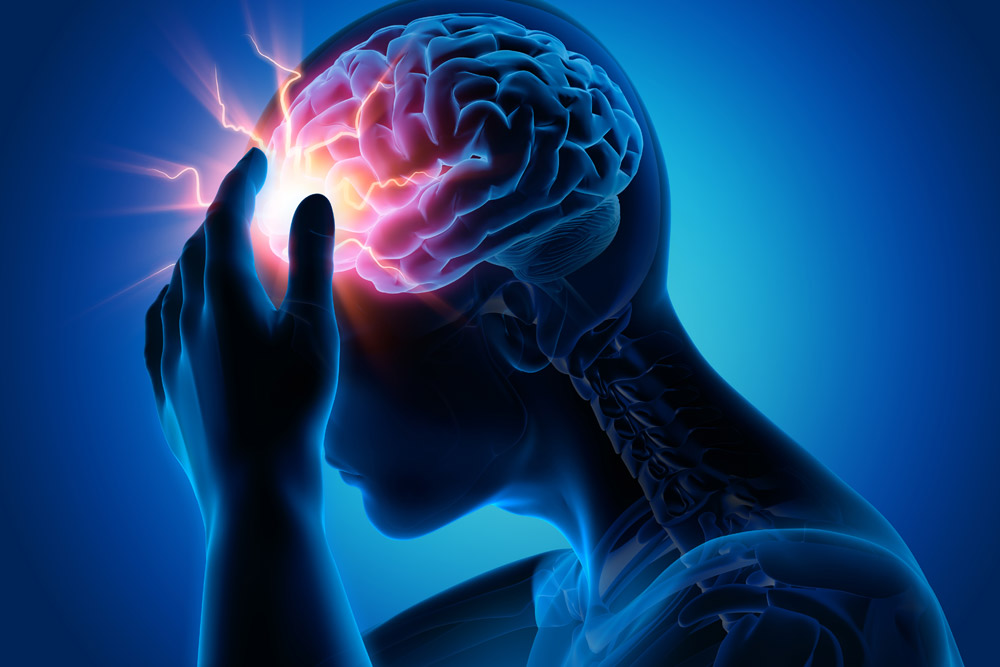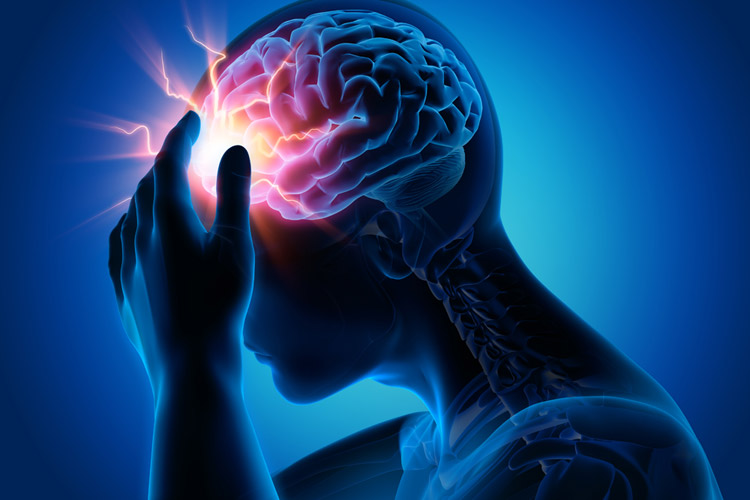
Scientists from The University of Texas at Dallas Center for Advanced Pain Studies (CAPS) have demonstrated a link between the hormone prolactin and the protein calcitonin gene-related peptide (CGRP) in mechanisms that may contribute to migraine in females.
Their research in rodents was published online March 22 and in the June print edition of the Annals of Neurology. The findings represent the most recent step in the researchers’ examination of dimorphism in pain — in this case, how migraine functions differently in either sex.
The findings also advance the understanding of the complex condition of migraine, which is three times more common in women, said corresponding author Dr. Gregory Dussor, associate professor of neuroscience and Fellow, Eugene McDermott Professor in the School of Behavioral and Brain Sciences (BBS). Dussor is a leading migraine researcher who is focused on exposing the mechanisms behind the poorly understood condition.
“We use ‘migraine’ as an umbrella term, and there are almost certainly people with types of migraine that we don’t yet appreciate. There are undoubtedly more dimorphic mechanisms in this disease than we understand,” Dussor said. “In this prolactin work, we are showing a clear difference between how males and females respond to CGRP and to prolactin — something you don’t see very often.”
Role of Prolactin’s Presence
Cognition and neuroscience doctoral student Amanda Avona BS’15, MS’18, the lead author of the paper, explained that prolactin — most associated with milk production in mammals — is thought to contribute to the severity and frequency of migraine in women.

“In this prolactin work, we are showing a clear difference between how males and females respond to CGRP and to prolactin — something you don’t see very often.”
Dr. Gregory Dussor, associate professor of neuroscience and Fellow, Eugene McDermott Professor in the School of Behavioral and Brain Sciences
“It’s been documented thoroughly that migraines are most severe in women between puberty and menopause, when prolactin production is elevated,” Avona said. “Also, some people develop prolactin-secreting tumors, and that prolactin increase has coincided with increase in migraine frequency or the development of migraine in individuals who previously didn’t suffer from them.”
CGRP is the focus of a great deal of broader pain research and has long been thought to contribute to migraine. Research elsewhere has shown that administering CGRP intravenously to migraine patients — both male and female — can trigger a migraine.
“This peptide, released by neurons, has been investigated by pain researchers for decades, because it is expressed in sensory neurons that are the first step in the pain pathway,” Dussor said. “Six of the new migraine therapeutics recently approved by the Food and Drug Administration are based on blocking CGRP signaling.”
Avona said their study suggests that CGRP’s effect is heavily dependent on the presence of prolactin.
“This can help explain the large gap between the sexes in prevalence of migraine,” she said. “We believe this is the first study to show a potential interaction between CGRP and prolactin in the context of migraine.”
‘Conditional Knockout’ Technique
Previous findings by CAPS researchers suggested that CGRP primarily triggered migraine behavior in female but not male rodents. In their new experiments, scientists employed a genetic engineering technique called “conditional knockout” to delete specific genes in order to study them in living rodents. They determined that the migraine-like responses in the female rodents caused by CGRP required functional prolactin receptors; additionally, using receptor blockers, they found that prolactin responses required functional CGRP receptors.
“In this paper, we’ve demonstrated that the gap seems dependent on the abundance of prolactin, that it does indeed interact somehow with CGRP in females, and that this seems to be responsible for females’ sensitivity to CGRP,” Avona said.
This newfound interaction between CGRP and prolactin suggests new avenues of research to further the understanding of pain physiology in general, Dussor said.
“We don’t really understand the mechanism that CGRP and prolactin are using to interact with each other,” he said. “Are they working together on a neuron, a blood vessel or an immune cell? All of those are present in the meninges, and the answer could be any or all of them. We need to know the details of that interaction. That’s what we’re trying to figure out next.”

“In this paper, we’ve demonstrated that the gap seems dependent on the abundance of prolactin, that it does indeed interact somehow with CGRP in females, and that this seems to be responsible for females’ sensitivity to CGRP.”
Amanda Avona BS’15, MS’18, cognition and neuroscience doctoral student and lead author of the paper
Dussor believes that most migraine cases might share the trait of hyperexcitability in the brain.
“What’s pushing the hyperexcitable brain over the threshold into a painful attack? In some people, it might come from within the brain; in others, from within the gastrointestinal tract, or from a scent or bright lights; hormones can be part of the process as well,” he said. “When it comes down to it, I don’t think anything is true in 100% of people with migraine.”
While neither prolactin nor CGRP should be regarded as the singular cause of migraine, they both seem to have an important role in the pathology of the condition, “probably one of many contributing factors, maybe an important one,” Dussor said.
At the Speed of Bright
UT Dallas has earned a reputation for incredibly bright students, innovative programs, renowned faculty, dedicated staff, engaged alumni and research that matters. Read stories about more of the University’s bright stars.
“What causes migraine in one person isn’t necessarily what causes it in another,” Avona added. “It’s highly complex, and we’re just beginning to chip away at it.”
Other authors of the study affiliated with UT Dallas include Dr. Ted Price BS’97, CAPS director and Ashbel Smith Professor of neuroscience; CAPS postdoctoral trainee Dr. Bianca Mason; former research assistant Carolina Burgos-Vega PhD’17, now at Spark Therapeutics; and Naureen Wajahat BS’20, now an MD/PhD student at UT Southwestern Medical Center. Other contributors include co-principal investigator Dr. Armen Akopian and his team from the UT Health Science Center at San Antonio and Dr. Vincent Goffin from Paris Descartes University in France.
The work was supported by grants NS072204 and NS104200 from the National Institute of Neurological Disorders and Stroke, a component of the National Institutes of Health.
